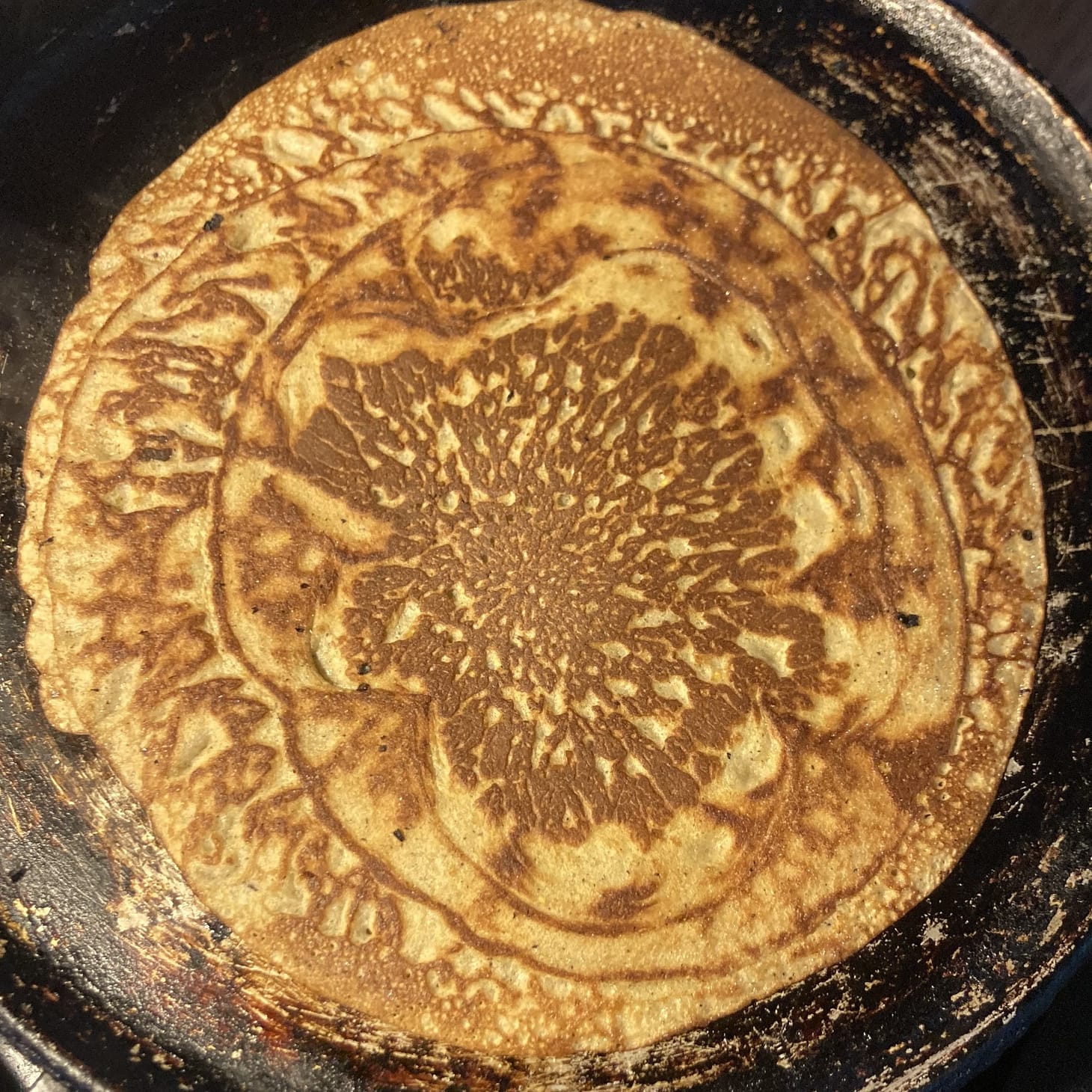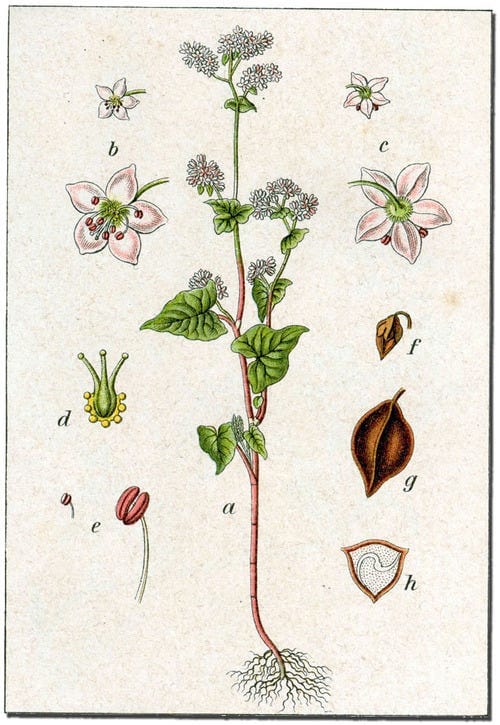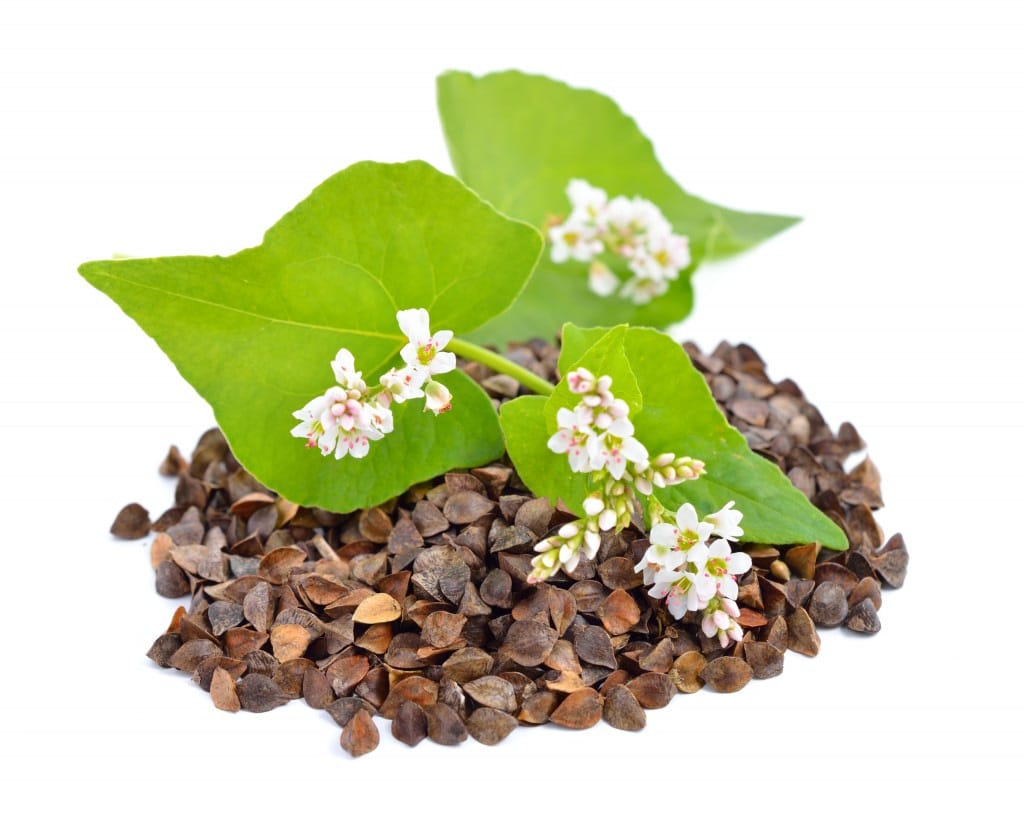Buckwheat
Springtime lovesong

Table of Contents

An old Slovenian tale claims that our ancestors, who once lived in lands far to the east, were brought to the lands beneath Triglav by a grain of buckwheat. When the time came to move on from their previous home, their goddess gave them the grain and said: “Plant this seed on your travels, and where it sprouts and grows, there you shall remain—but if it does not sprout in three days, then you shall dig the seed up and continue on your way.”
The story goes on to say that the seed did not sprout on the shores of the Black Sea, nor on the plains of Poland, nor the German mountains—it rose from the earth and bloomed white across the land only when it reached Slovenian ground. From once upon a time and ever after!
—Thank you to ethnobotanist Vlasta Mlakar for describing deep cultural ties to this seed and food!
Good for the ground, good for you
Watching spring explode—tulips, trilliums, and irises, oh my—I, Amy, am filled with fondness. My eyes are grateful for what I see, and as I bask in these sunny May days I am awed by plants and how they work. Beyond the beauty we selfishly receive and arguably need, plants serve ecosystems.1 As farmers are planting spring grains, I thought I’d give a shout out to one of my favorite crops, buckwheat!

Native to southern China, buckwheat is related to rhubarb and sorrel—but significantly, not to other commercially planted crops, making this plant a good choice for crop rotations.2
Given the economics of yield-based farming, the tendency is to plant crops that will pay the most year after year, and often this means plants that are in the same plant family. Cycling a round of buckwheat through a field interrupts the cycles of pests and disease that are attracted to crops. Additionally, buckwheat’s expansive root system builds soil health, and its many leaves help smother weeds. So, by eating your buckwheat—as flapjacks or snuggled into a cake, or kasha in savory dishes—you are helping farmers, and the environment.
I also champion buckwheat because I love the underdog. Buckwheat does well on poor quality soils—compared to wheat, which is very demanding of nutrients, and wants soil with very good drainage—buckwheat thrives in adversity. This is the reason it is a staple in many cultures.
Buckwheat actually has no wheat and no gluten protein at all. It is a pseudo-cereal, a beautiful term for a few non-grain foods that can function as grains do.

Buckwheat is known for protein and fiber. It has been linked to good cardiovascular health and shows promise for helping controlling diabetes. Buckwheat, like many whole grains is a good source of magnesium and has many of the benefits of whole grains in general.
When cooking with buckwheat flour, do remember it contains no gluten and therefore lacks the structural components that baked goods often rely upon from wheat flour. However, of all the non-glutinous options, buckwheat has a terrific binding capacity. This viscosity makes it a good sub for gluten in cakes, quick breads and cookies.
To get your buckwheat footing, start at the griddle. There are a gazillion buckwheat pancake and crepe recipes! Go down a ployes bunnyhole and you may stay there all day long, because these Acadian flatbreads are served breakfast, lunch and dinner. Ployes are generally halved with wheat flour, but you can use GF flour. If purity is not an issue, go for my favorite combo: buckwheat and cornmeal. I think the two are great friends and used them in a batter I sat overnight with a pinch of yeast. Last week, I substituted buckwheat and cornmeal in the banana muffin recipe from Martin Philip’s cookbook Breaking Bread. Buckwheat and rye are terrific together, too.
Buckwheat flour is either light or dark—the dark flour has more of the dark hulls that cover the kernels ground into it. The light flour either has those sifted free, or comes from kernels that have the hulls entirely removed. The hulls cling tight to the seeds, and I’ve met a lot of small-scale farmers who just mill them together.

If you want to walk tenderly into buckwheat-land, try substituting 1/3—1/2 cup buckwheat in a cookie or quick bread recipe that uses 2 cups of flour. How do you like the flavor and texture? Play with higher amounts, inching up to half buckwheat flour and half cornmeal or rye flour in any quick bread, cake, or cookie recipe. For another buckwheat neighborhood, head straight for noodles. Sonoko Sakai is an excellent teacher, so try out her recipe for soba noodles.
Bear in mind that buckwheat, like other whole grain flours, is very thirsty, and will need more liquid if you are currently using all-purpose flour without any bran. This is especially true for dark buckwheat flour—and evident in the following recipe. When I use whole grain wheat flour to make crepes, I use a full cup of flour to this ratio of eggs and milk. Depending on the grind of your buckwheat flour, and the amount of hull sifted from it, you may need to add even more liquid.
Buckwheat Rye Crêpes
Makes 6-8 crêpes
3 eggs
2 cups milk
1/2 cup rye flour
1/3 cup buckwheat flour
Scant teaspoon salt
Beat the eggs well and add the milk. Whisk in the flours and salt. Let sit for 10 minutes to half an hour—or overnight in the refrigerator—before baking on a hot buttered griddle.
When a botanist friend showed me trout lilies on a woodsy walk recently, I asked what job it had. He called the question extractive, and said he doesn’t think about plants that way. How I think about plants comes from what I’ve learned of farming, where plants are looked at in context of serving the goals of agriculture. Robin Wall Kimmerer writes beautifully about indigeneity and plants, and I hope you’ll add one of her books to your summer reading list. Braiding Sweetgrass is a great place to start. ↩
Shoutout to Katie Gourley for her small book/hefty zine Baking for Biodiversity, which has been on my mind because Andrew is looking at zines. She really carries you through this topic on a wonderful kitchen ride! Apparently she has a second edition in the works—that is as exciting as buckwheat! ↩
wordloaf Newsletter
Join the newsletter to receive the latest updates in your inbox.



